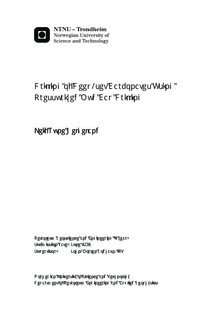| dc.description.abstract | A majority of the easy fields have already been developed, while demand for oil and gas continues to increase rapidly. Reservoirs in deep-set carbonates contains a large amount of the worlds remaining hydrocarbons and could pose as a solution for supplying the future demand. However, extracting these hydrocarbons has proven to be a daunting task. Carbonate formations are often severely fractured and karstified, leading to large or even total losses during drilling. As these fractures and caves are also the main target for gas, kicks and blow-outs are a constant threat.In this master thesis a variant of Managed Pressure Drilling (MPD), Pressurized Mud Cap Drilling (PMCD), has been reviewed. PMCD uses a static mud cap in the annulus to provide adequate downhole pressure, while a cheap sacrificial fluid is pumped down the drillstring to remove cuttings and transport it into the formation. A literature study was done in order to compare PMCD against other existing tech- niques, specifically conventional drilling and Constant Bottom Hole Pressure, another MPD variant. Working along side the losses have enabled PMCD to safely drill to Total Depth in these reservoirs, while reducing most of the Non-Productive Time and having an overall cheaper operation. Where other techniques are relying on time consuming and costly Lost Circulation Material, cement or other means of plugging the formation, PMCD works at its optimal.A static model was made to more clearly show the physics behind PMCD and to be able to simulate an operation through a gas bearing total loss cave in a deep- set carbonate environment. Its procedures and advantages became clear, though the model and reservoir environment was rather simplistic. After an evaluation, the results were that PMCD lacks versatility and is not yet fully accepted by the industry, but that it offers the best solution for drilling of deep-set carbonates. The main conclusion is that in these reservoir, PMCD should as a minimum be used as a contingency in exploration wells. | nb_NO |

